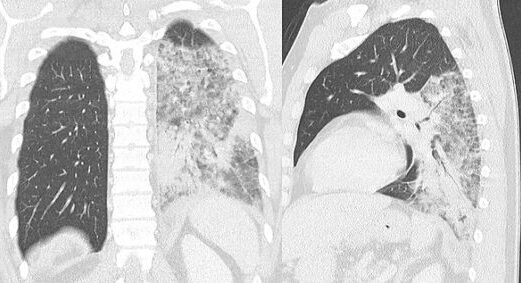New York City’s South Bronx was the center of the largest outbreak of Legionnaires’ disease in the city’s history in 2015. Legionnaires’ disease—a sometimes lethal agent causing pneumonia—is caused by Legionella bacteria, which are commonly found in warm water systems like cooling towers and plumbing. Traditional public health investigations relied on a laboratory method called pulsed-field gel electrophoresis (PFGE) to match bacterial DNA from patients with potential environmental sources. However, PFGE lacks the precision to identify and resolve closely-related, but not identical, strains of Legionella. In this outbreak, Dr. Kim Musser used Whole-genome sequencing (WGS) as a molecular “fingerprint” to link a cooling tower to patient strains. She had developed molecular methods while working in the Wadsworth Center—New York State’s public health laboratory. In WGS, bacterial DNA is sheared, barcoded and identified, sequenced, and then analyzed via computational methods. WGS is a highly discriminatory method that can detect single nucleotide differences, allowing scientists to accurately pinpoint the source of outbreaks. During this Legionnaires’ outbreak in the Bronx, working with Don Weiss, the source was confirmed as a contaminated cooling tower when genetically identical Legionella bacteria matched between patients and the suspected cooling tower.
Another advanced molecular method used in this Legionnaires’ disease outbreak was polymerase chain reaction (PCR). PCR detects the presence of specific genetic material by amplifying DNA present in the sample with DNA primers specifically designed to detect the organism of interest. Although PCR can identify the presence and relative quantity of a pathogen, it does not provide a sequence analysis to link organisms between disparate sources—any permutation of patient and environmental sources. Dr. Musser continues to advance molecular methods, such as RNA baiting to extract DNA from clinical specimens rather than having to grow the bacteria on culture media.
Citations
https://pmc.ncbi.nlm.nih.gov/articles/PMC5349490/pdf/10.1177_0033354916689620.pdf
https://pmc.ncbi.nlm.nih.gov/articles/PMC11005328/pdf/jcm.01305-23.pdf

